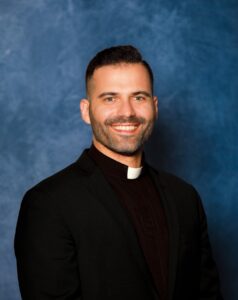Reflection on the Readings

A 2019 Pew Research Center study revealed that 69% of Catholics in the United States believe that the bread and wine used in Mass “are symbols of the body and blood of Jesus Christ.”
The problem is that this is not what the Catholic Church teaches about the Eucharist, and it conflicts with two thousand years of Catholic tradition, running from Scripture through the Church Fathers and right up to the present day.
The Catechism of the Catholic Church (CCC) teaches that, beginning “at the moment of consecration” (CCC 1377), the bread and wine offered at Mass “become Christ’s body and blood” (CCC 1333).
This is not a metaphor, a symbol, or a spiritual idea; it really happens. In the Eucharist, “the body and blood, together with the soul and divinity, of our Lord Jesus Christ and, therefore, the whole Christ is truly, really, and substantially contained” (CCC 1374).
The Eucharist still appears to our senses as ordinary bread and wine; but it has been transubstantiated (or changed in its substance) into the body and blood of Christ.
This is why Catholics attending Mass are encouraged to “convey the respect, solemnity, and joy of this moment when Christ becomes our guest” (CCC 1387); it’s why we adore the Eucharist, “not only during Mass, but also outside of it” (CCC 1378); and it’s why the Church teaches that the Eucharist is “the source and summit of the Christian life” (CCC 1324).
This Sunday, June 22nd, we’ll have a splendid opportunity celebrate our Faith and rediscover the truth of the Eucharist. Immediately after the 12pm Mass, we will conduct an outdoor Eucharistic procession. Come worship the Lord and give witness to Jesus’ marvelous presence in the Eucharist.

Fr. David C. Santos, Pastor
Quote of the Week
If we but paused for a moment to consider attentively what takes place in this sacrament, I am sure that the thought of Christ’s love for us would transform the coldness of our hearts into a fire of love and gratitude.
